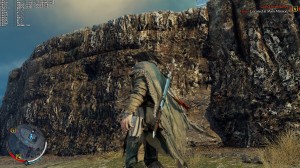While our PC Performance Analysis has been slightly delayed, below you can find some a new comparison between the High and the Ultra textures for Middle-earth: Shadow of Mordor. As we can see, there are barely any differences between these textures, suggesting that these are basically only uncompressed textures. There are slight differences but for the most part, they look similar.
Monolith claimed that 3GB of VRAM is required for High settings, however that was nothing more than an exaggeration. Our GTX690 was able to run the game with constant 70-75fps at 1080p with Ultra Details and High Textures (thanks to a custom SLI profile).
On the other hand, the game was simply unplayable when we enabled Ultra textures. There was severe stuttering and the overall gaming experience was as bad as it could get. This also means that the game was loading those uncompressed textures when we selected them (otherwise there wouldn’t be any performance difference at all between High and Ultra textures).
As always, High textures are on the left whereas Ultra textures are on the right. As you can see, the difference is really minimal between them. Do note that we had to re-run our playthroughs in order to offer proper comparisons as the game alters its TOD whenever you restart it. Also note that PCGamesHardware’s previous comparison had different TODs (therefore, additional details due to shaders could be an issue in that comparison).
Furthermore, it appears that Eurogamer is also reporting the very same thing; that the difference between the Ultra and the High textures is really, really minimal. Hell, in their article you can only spot the differences by using the magnifying glass.
Enjoy!

John is the founder and Editor in Chief at DSOGaming. He is a PC gaming fan and highly supports the modding and indie communities. Before creating DSOGaming, John worked on numerous gaming websites. While he is a die-hard PC gamer, his gaming roots can be found on consoles. John loved – and still does – the 16-bit consoles, and considers SNES to be one of the best consoles. Still, the PC platform won him over consoles. That was mainly due to 3DFX and its iconic dedicated 3D accelerator graphics card, Voodoo 2. John has also written a higher degree thesis on the “The Evolution of PC graphics cards.”
Contact: Email











